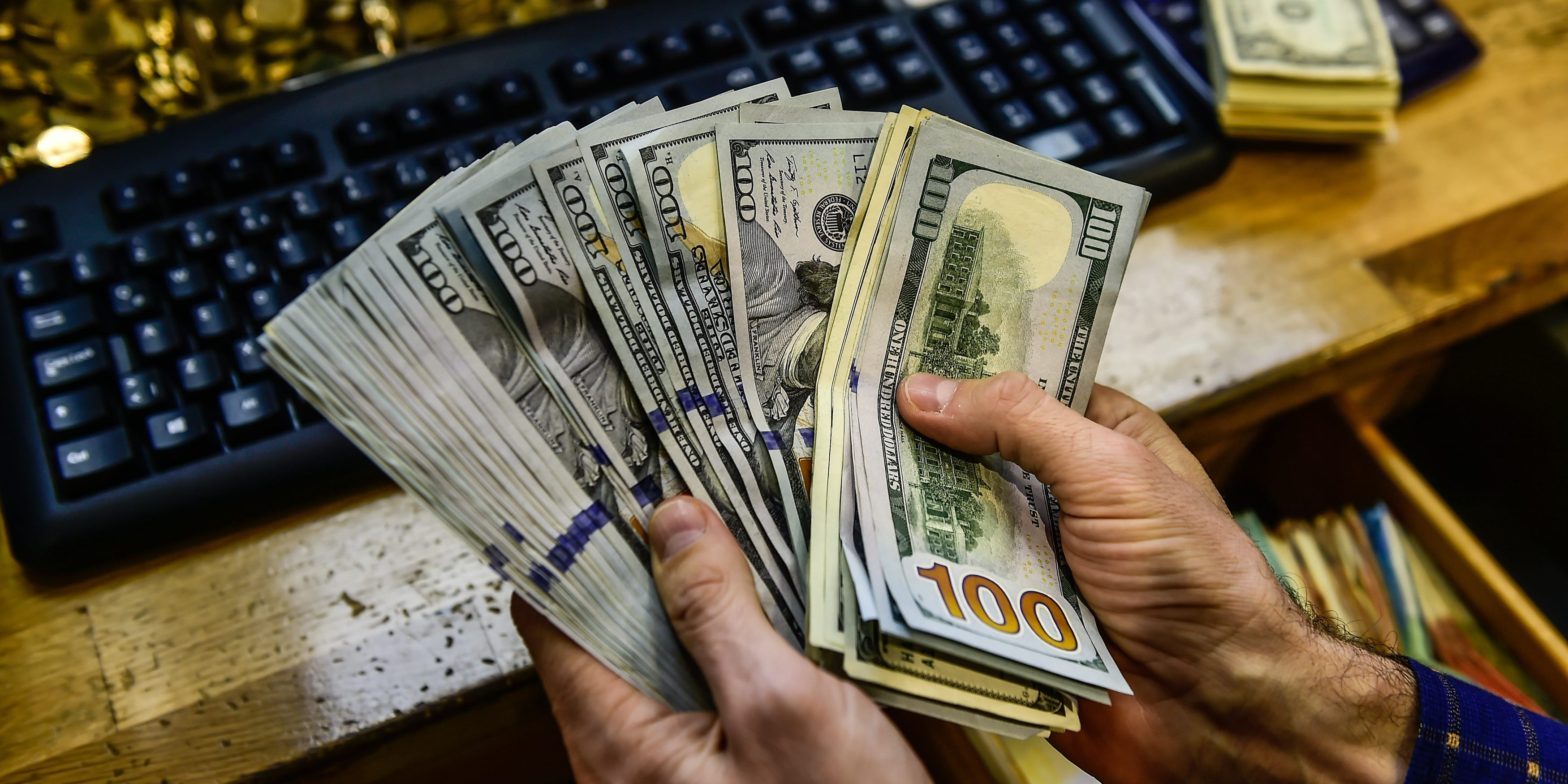The US dollar has been sharply advancing this year, with the widely watched US Dollar Index hitting a 20-year high. Multinational companies including Apple and Pfizer have noted dollar strength could dent financial results. The DXY has jumped 10% during 2022 and it’s likely to stick around high levels in the coming months, experts say. Loading Something is loading.
What’s shaping up as a banner year for US dollar strength is being flagged as a pain point by multinational companies – and it may take months before a sustainable pullback in the greenback takes hold, analysts say.
Apple, Pfizer, and other large corporations have told investors their financial results may be dented by foreign exchange fluctuations which this year features the dollar shooting up to a two-decade high against a widely watched basket of currencies.
Scorching inflation and the Federal Reserve ‘s response are at the center of the dollar’s ascent in relative value. The US Dollar Index recently marked a 10% increase for 2022 when it reached above 104. The index was at 103 on Friday – but it may not travel significantly lower over the next few months.
“In the next three to six months, I would say 100 to 105 is probably where the dollar [index] might be trading around,” Fawad Razaqzada, market analyst at Forex.com, told Insider. “I don’t think the dollar is going to slump really sharply simply because other central banks are not nearly as hawkish as the Federal Reserve,” he said in an interview from London.
The US Dollar Index gauges the greenback’s performance against the euro, the Japanese yen, the British pound, the Canadian dollar, the Swedish krona, and the Swiss franc. The greenback this year was up 11% against the yen.
The DXY is “overbought” and is showing the start of a correction, Bank of America said in a Friday note. “However across time frames we see a bullish breakout, uptrend conditions and no top pattern which means we should buy the dip. With no visible DXY top, it’s possible the DXY trends to 110 this summer,” wrote BofA technical strategist Paul Ciana.
Dollar demand
For US companies conducting business overseas, dollar strength can make their products more expensive for holders of other currencies to purchase. Also, the value of their international sales is lowered when converted back to dollars. S&P 500 companies generate 41% of revenues outside the US, according to FactSet.
Foreign exchange “is an issue with the dollar being strong at this point,” Apple said about factors that could lead to lower sales growth in its current fiscal third quarter compared with the second quarter. “With respect to foreign exchange, we expect it to be a nearly 300 basis points headwind,” or to hurt revenue by about 3%, Apple’s CFO Luca Maestri said in an earnings call in April.
Meta Platforms, formerly Facebook, foresees a nearly 3% dent from foreign currency on second-quarter revenue growth. Pfizer said its anticipated negative impact from exchange rate changes had increased to $2 billion from $1.1 billion guided in February but the COVID vaccine maker held its 2022 revenue projection at $98 billion to $102 billion.
“We’ve seen another step in cost pressures, and foreign exchange rates have moved further against us,” Andre Schulten, chief financial officer at Procter & Gamble, said in its third-quarter earnings call. “We now expect FX to be a $300 million after-tax headwind to earnings for the fiscal year,” he said.
The Fed last year signaled it would undertake an aggressive cycle of interest-rate hikes to cool inflation. Headline US consumer price inflation was 8.3% in April.
Rate-hike expectations have pushed US Treasury bond yields in 2022 to multi-year highs, making them attractive to foreign investors comparing debt from other countries, such as Japan, that offer relatively lower return rates. Investors will sell foreign currencies and buy dollars to purchase higher-yielding US bonds, driving up demand for the greenback and its value. The 10-year Treasury note yield has risen above 3% and was at 2.8% on Friday. Japan’s 10-year yield was 0.24% on Friday.
The Fed has raised interest rates by 75 basis points since March and a hefty hike of 50 basis points is expected at the June 14-15 meeting. Rate hikes are aimed at lowering inflation by slowing the pace of economic activity.
Growth wobbles
A significant shift to fears about a US recession from inflation concerns could pose somewhat of a challenge to the dollar’s run-up, Huw Roberts, director of analytics at Quant Insight, told Insider. One flick at that idea came when the 10-year yield fell from 3% after the April inflation report showed prices eased from March’s 41-year high of 8.5%.
“[If] bond yields keep coming lower and copper keeps coming in lower, then that’s telling you the markets are worried about growth,” said Roberts. “Is that necessarily dollar bearish? Well, it certainly takes the wind out of the dollar upside but it won’t necessarily be an outright dollar-bear call because if the US economy is struggling, the rest of the world is going to be struggling,” he said.
“I would frame it as it might mean an end to the one-way traffic that is dollar upside. Does it necessarily open up dollar downside? That’s much more debatable,” Roberts said.
